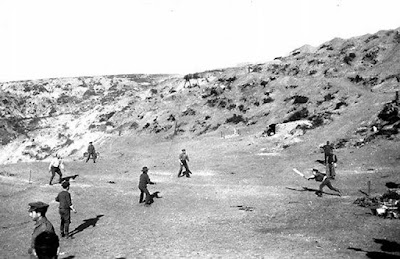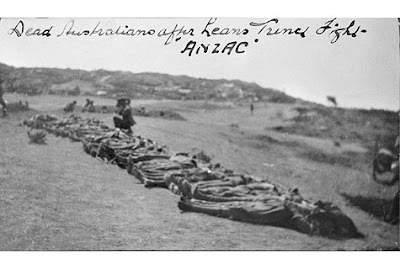This is the longest letter so far.
Tel-el-Kebir Camp
25-12-15
Dear Mater,
Just a line to hope you have had a good day. I received your Xmas parcel with the leather coat, pipe-pouch, and all the other bonza things quite recently, also two of the regular parcels and also the rug, for all of which many thanks.
The coat is the envy of everyone who has seen it and if we had stayed at Maadi a bit longer I was going to hire a dog-cart to match the rug.
We've had two moves in less than a week. Last Monday we moved from the Southern Camp, Maadi, to the Northern Camp, about half a mile but as it means striking tents packing all gear and taking up horse lines etc and then reversing the process it is a pretty big job. The having worked hard all Tuesday straightening things up, we got orders to leave from here on Wednesday morning about 7pm that night. We cleared out from Maadi about 10:15am, got into Tel-el Kabir siging about 12:45, trucked horses and wagons and left about 4pm arriving here about 7:30pm. We trucked gear and horses, bivouac-ed the night and next morning pitched tents and put down horse lines. I cleared out to Cairo Friday morning to get some things for the mens' Xmas dinner. They had half a chicken, 1/2 lb of potatoes, 1/4 tin pineapple 1/3 tin beans each and as we got a 'billy' each the morning we left Maadi they did pretty well.
I don't know if I thanked you for the two cases of groceries also the ...same. Apart from some chickens everything we had in our mess was out of your boxes. We had tomato soup, whitebait a la pate, sweet corn, boiled chicken with peas, beans and potatoes, then two helpings of p-p, a cigar and a creme-de-menthe jube. We drank your health in tea, it being the strongest drink in camp. We had the other pudding the day before. Altogether I got 6 sixpences, a boomerang and a horseshoe.
When I was in Cairo on Xmas Eve there was a big charity show at Shepheards (see image below), a Xmas tree and various things to buy, there was a very big and bright crowd so I suppose it was a success.
This camp is right alongside the Cairo-Ismailia line, and the site of the battlefield of 1882 is within a short walk. Our fellows have quite a lot of relics already including a George IV sovereign of 1830.
We expect to have the Battalion here any day now. This is an ideal site for a camp and we will have 28 battalions alongside one another in one line. When all the troops are here it will be as big again as Mena was.
I found that I had forgotten to enclose the photo I was talking about so here it is. I'll be sending a good few more soon as the chap that took them has a chance to print them off.
I haven't had any letters for a long time but I suppose they'll come one day. Can't think of anything else.
Love to Pater and Aunt Puff.
Yours lovingly,
Athol
AWM image Ref: C00207
This is Tel el Kebir camp between Cairo and the Suez Canal. Athol arrived here in late December 1915 and awaited the rest of his battalion to which were shipped from Gallipoli/Lemnos
in early January 1916.
Shepheard's Hotel in Cairo
Kairo , Shepheard's Hotel." by New York Public Library
Athol visited Shepheards a few times in December including Xmas eve 1915 for a charity show.







